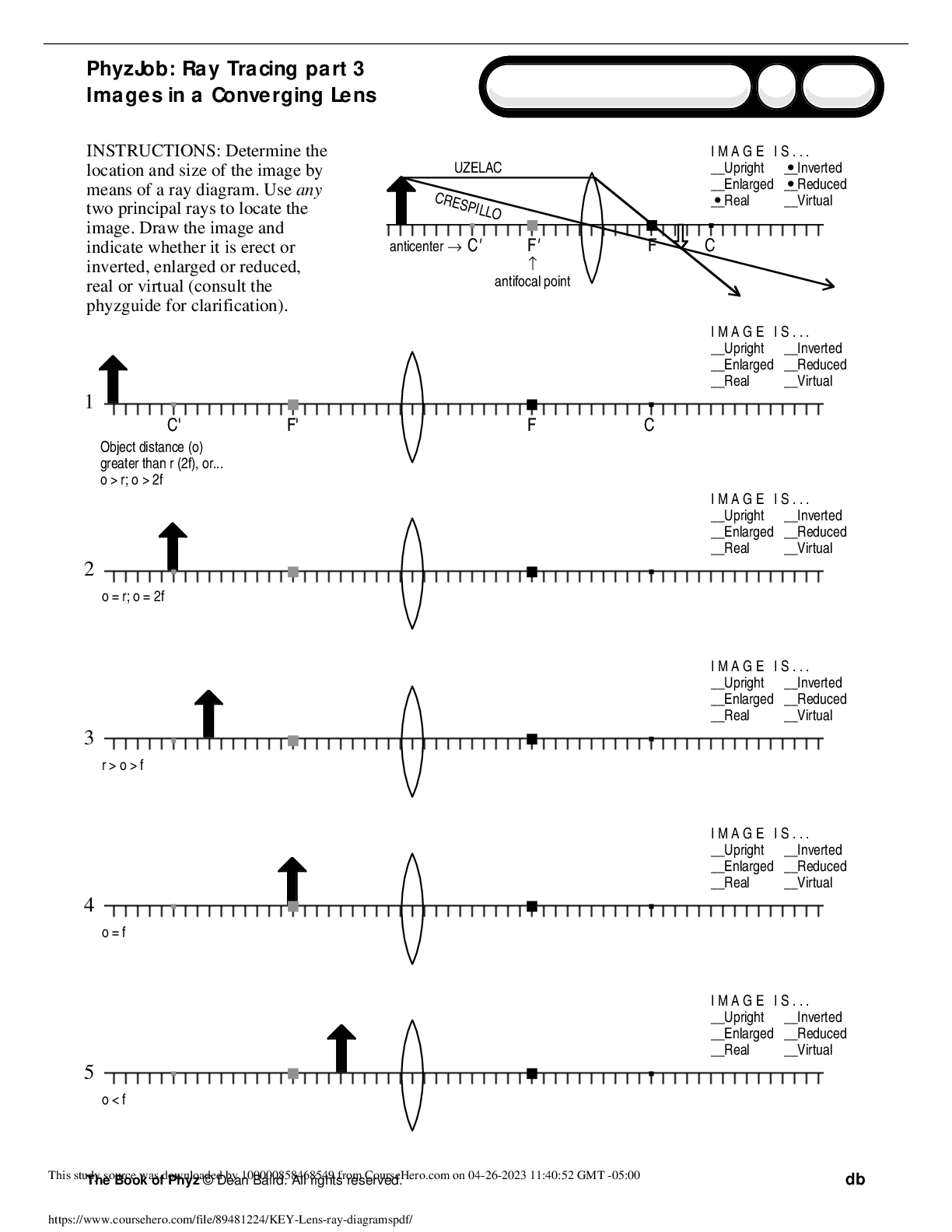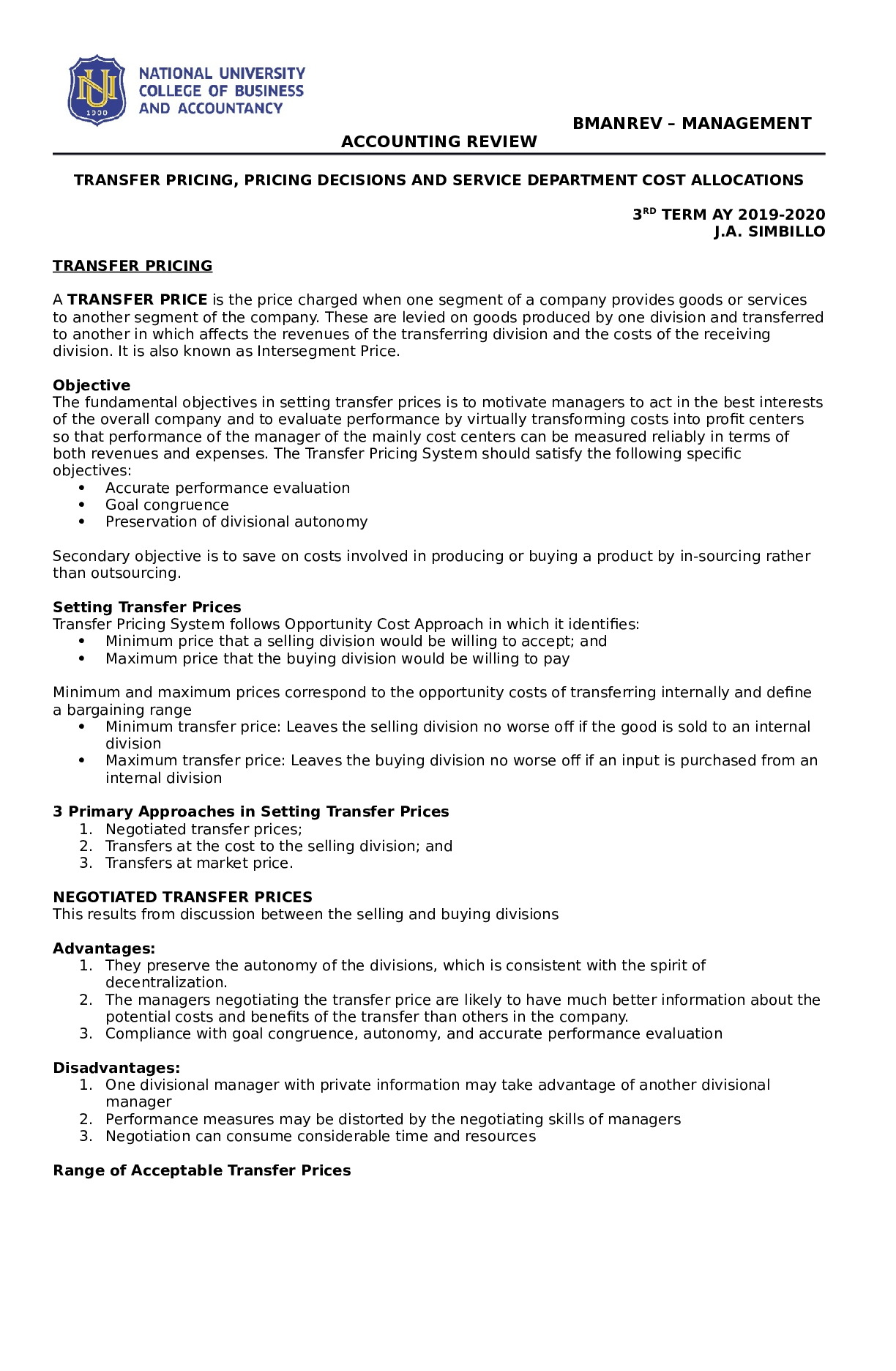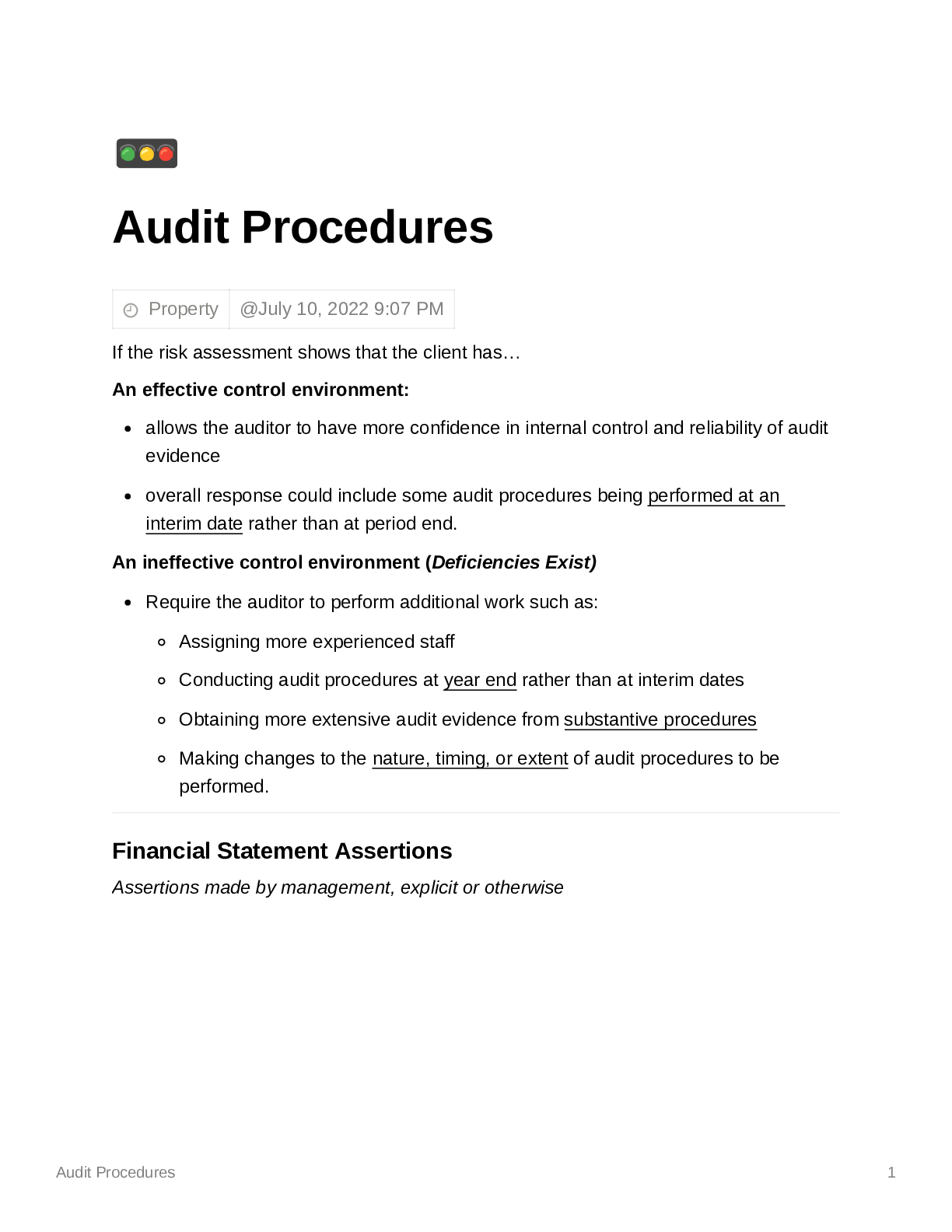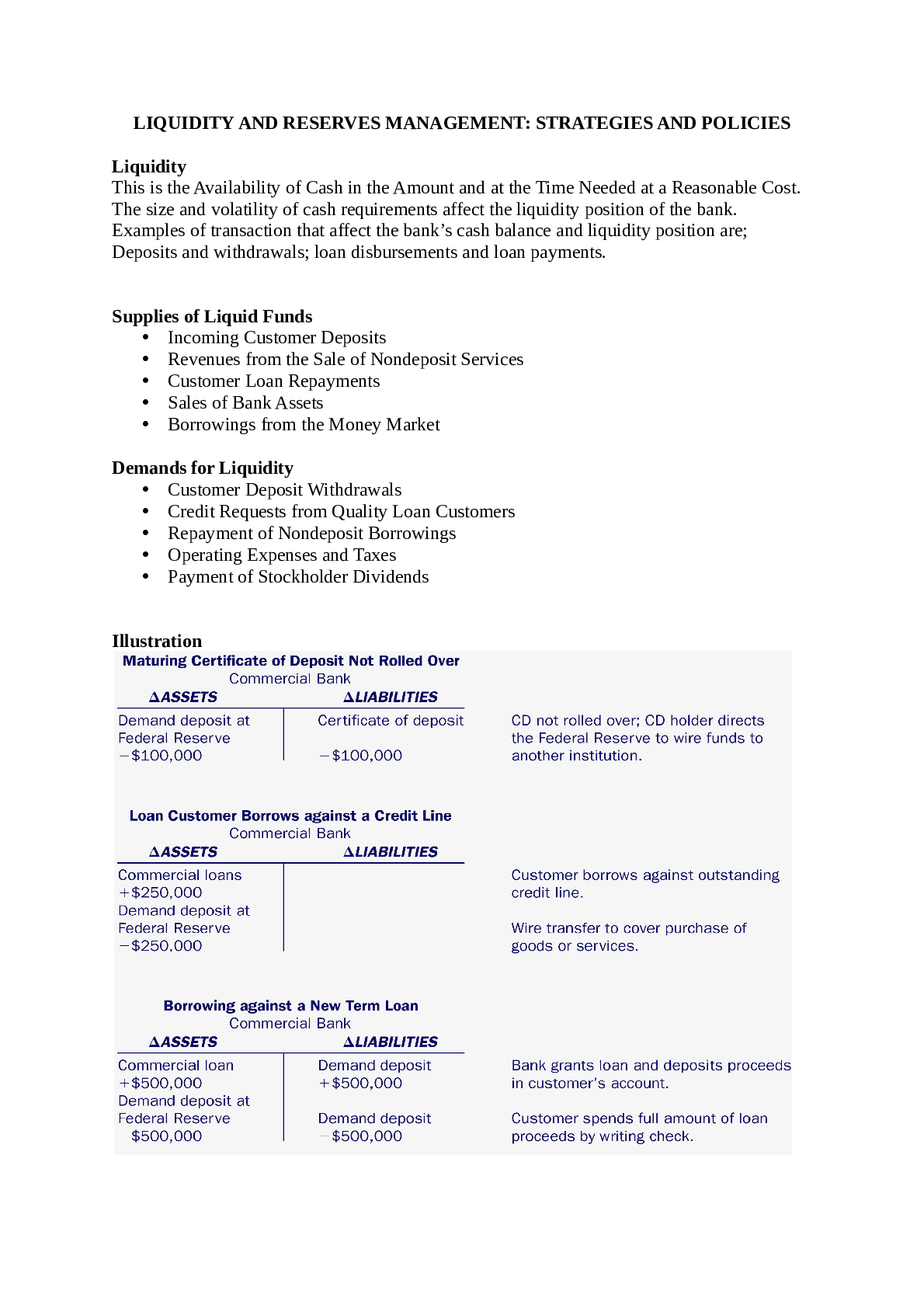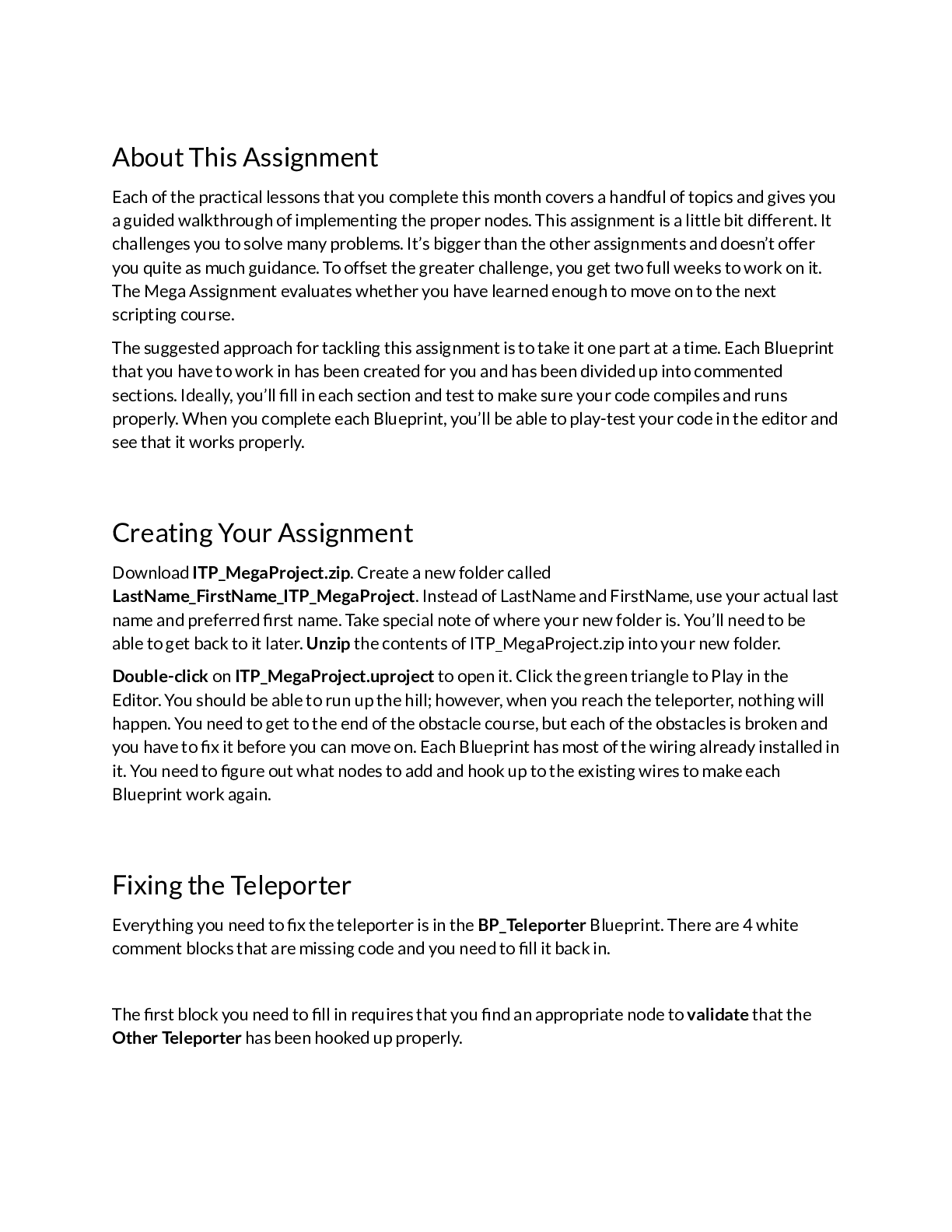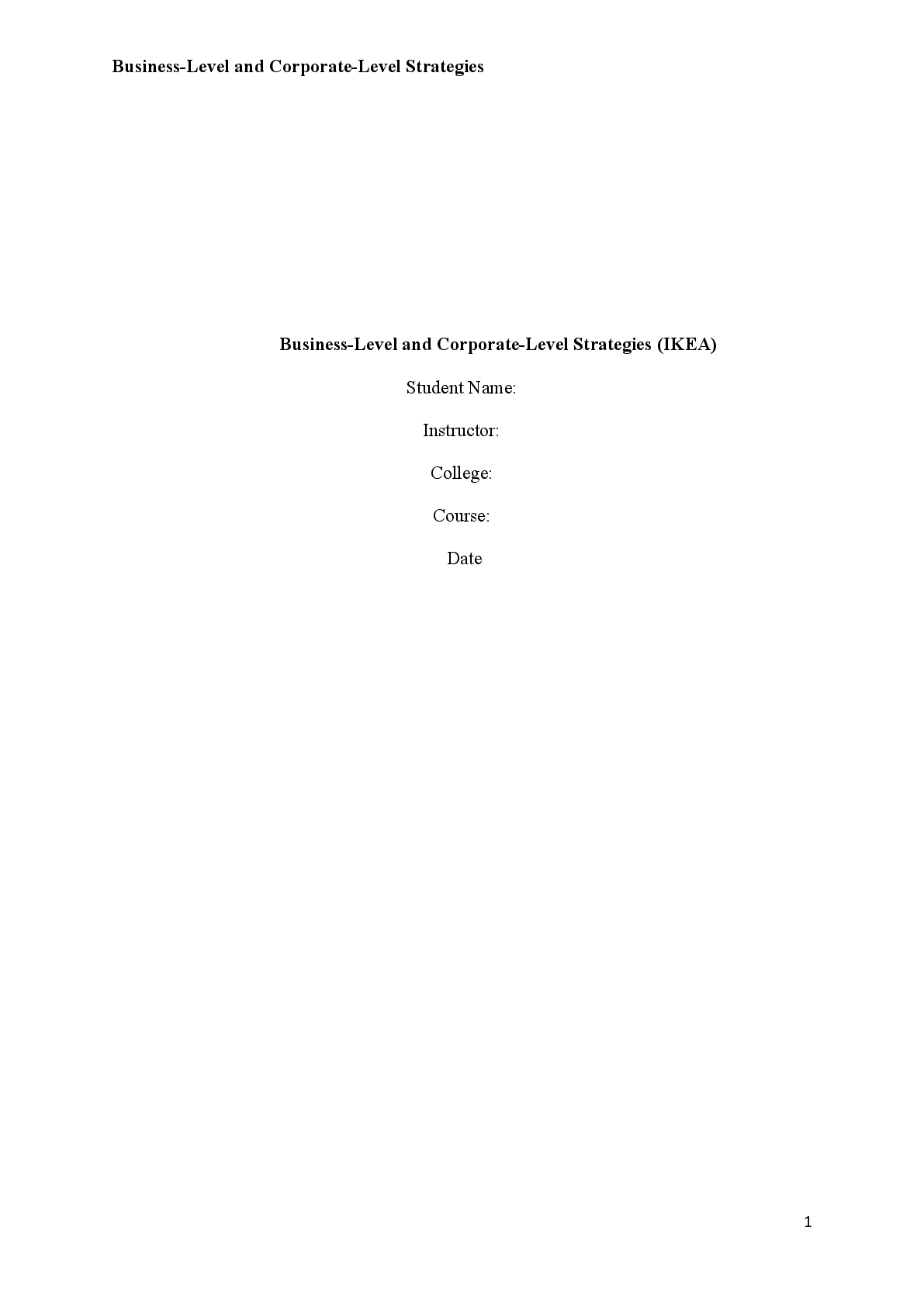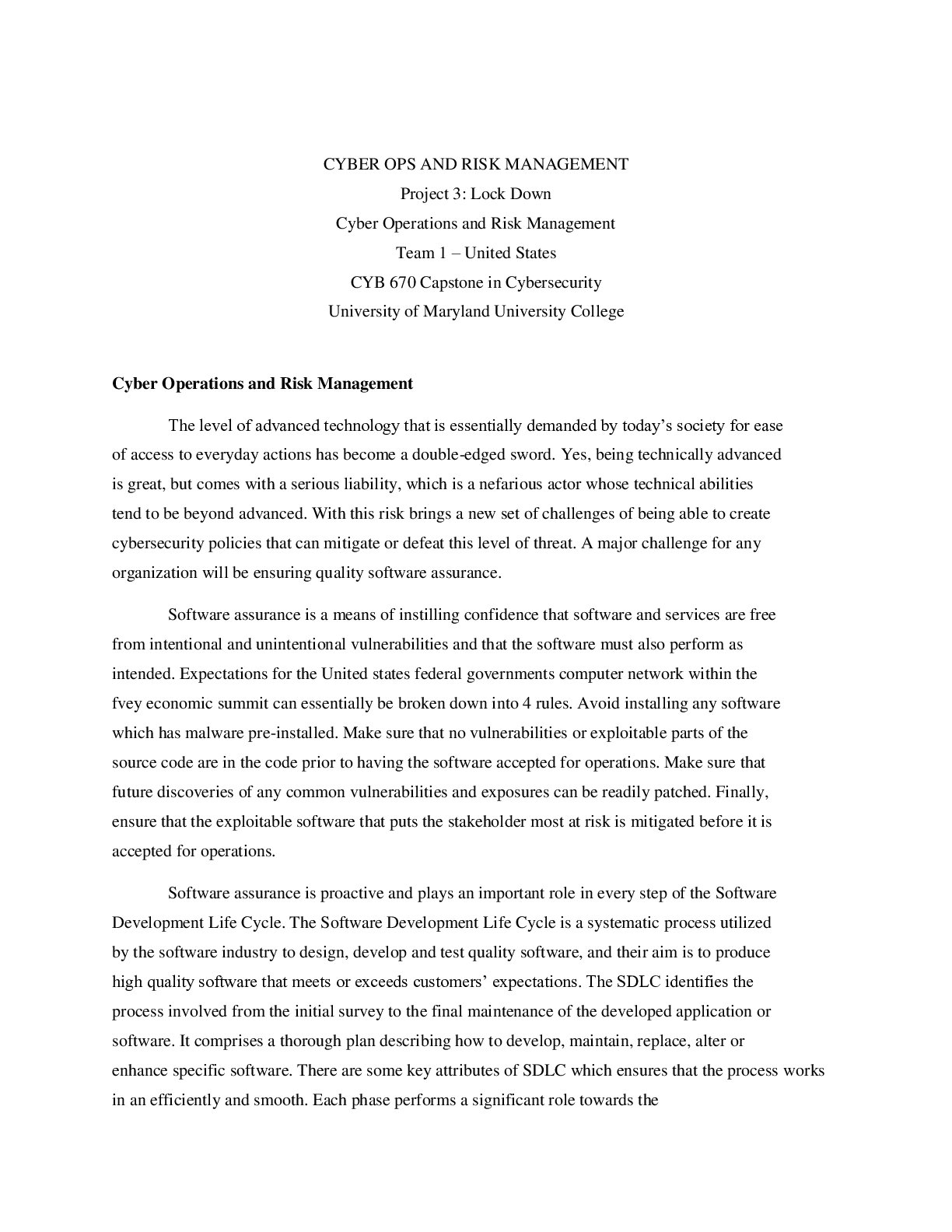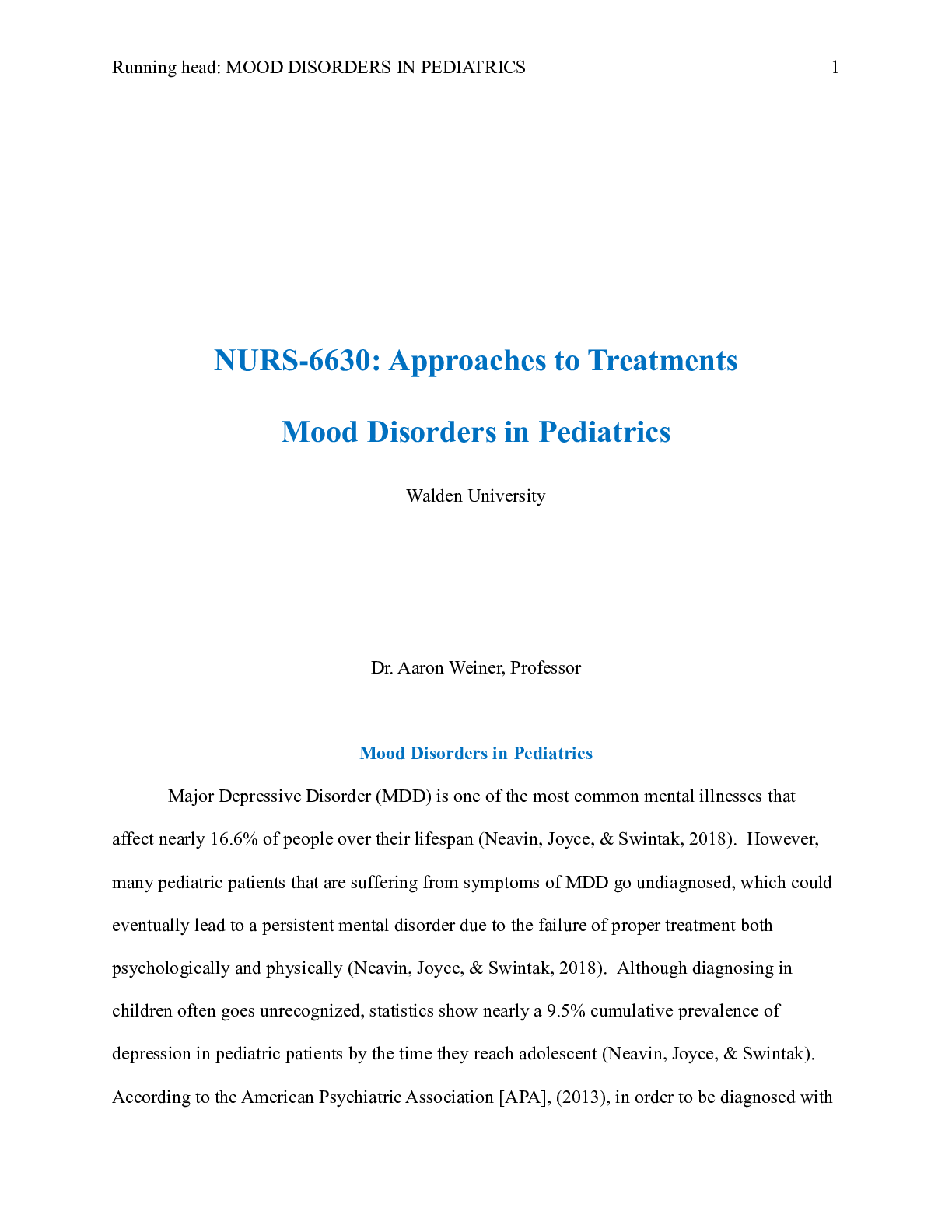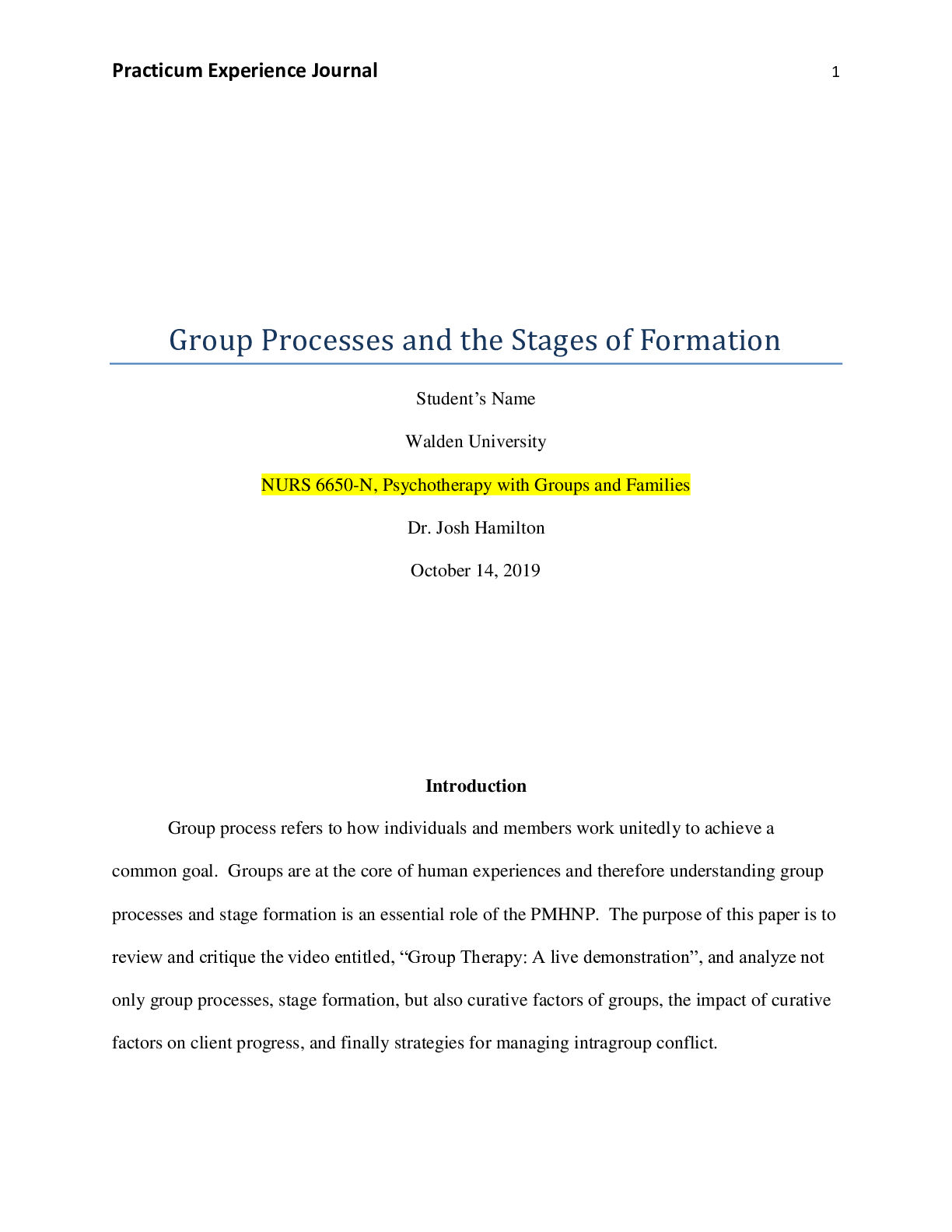*NURSING > Research Paper > THE Complete Nursing Bundle Version 2: Head To Toe Assessment, Dosage Calculation, Lab Value Cheat S (All)
THE Complete Nursing Bundle Version 2: Head To Toe Assessment, Dosage Calculation, Lab Value Cheat Sheet, Lab Value Memory Tricks, Blood Types, Electrolyte Imbalances, Fundamentals, Pharmacology: Suffixes, Prefixes, & Antidotes, Mental Health Disorders, Mental Health Pharmacology, Mother Baby, Pediatric Development Milestones, Pediatrics, Med-Surg (All Systems & Discorders) and Templates & Planners, and
Document Content and Description Below
THE COMPLETE Nursing School BUNDLE TABLE OF CONTENTS Head To Toe Assessment 4 Dosage Calculation6 Lab Value Cheat Sheet.18 Lab Value Memory Tricks 19 Blood Types.20 Electrolyte Imbalances 21 ... Fundamentals. 25 Pharmacology: Suffixes, Prefixes, & Antidotes.40 Mental Health Disorders ..48 Mental Health Pharmacology 58 Mother Baby .. 64 Pediatric Development Milestones .81 Pediatrics 86 Med-Surg Renal / Urinary System..104 Cardiac System .113 Endocrine System.137 Respiratory Disorders. 147 Hematology Disorders. 153 Gastrointestinal Disorders . 156 Neurological Disorders 161 Burns 166 ABG’s 170 Templates & Planners .. 174 Note from Kristine.. 193 3 lOMoARcPSD|10926056 Head & Face HEAD • Inspect head/scalp/hair • Palpate head/scalp/hair FACE • Inspect • Check for symmetry • To assess Cranial Nerve 7, check the following: – Raise eyebrows – Smile – Frown – Show teeth – Puff out cheeks – Tightly close eyes EYES • Inspects external eye structures • Inspect color of conjunctiva and sclera • PERRLA – Pupils Equal, Round, Reactive to Light, & Accommodation Neck, Chest (Lungs) & Heart NECK • Inspect and palpate • Palpate carotid pulse • Check skin turgor (under clavicle) POSTERIOR CHEST • Inspect • Auscultate lung sounds in posterior and lateral chest – Note any crackles or diminished breath sounds ANTERIOR CHEST • Inspect: – Use of accessory muscles – AP to transverse diameter – 6WHUQXP FRQILJXUDWLRQ • Palpate: symmetric expansion • Auscultate lung sounds – anteriorand lateral – Note any crackles or diminished breath sounds HEART • Auscultate heart sounds (A, P, E, T, M) with diaphragm and bell – Note any murmurs, whooshing, bruits, RU PXIŶHG KHDUW VRXQGV Introduction • Knock • Introduce yourself • Wash hands • Provide privacy • Verify patient ID and DOB • Explain what you are doing (using non-medical language) Orientation • What is your name? • Do you know where you are? • Do you know what month it is? • Who is the current U.S. president? • What are you doing here? • A&O X4 = Oriented to Person, Place, Time, and Situation "Normal" Vital Signs PULSE: 60-100 bpm BLOOD PRESSURE:120/80 mmHg O2 SATURATION: 95-100% TEMPERATURE: 97.8-99.1° F RESPIRATIONS: 12-20 breaths per min INSPECT PALPATE PERCUSS AUSCULTATE pherals PERIPHERALS Upper extremities • Inspect and palpate. • Note any texture, lesions, temperature, moisture, tenderness, & swelling • Palpate radial pulses bilaterally (+1, +2, +3, +4) SHOULDER • Inspect, palpate, and assess ELBOWS • Inspect, palpate, and assess HANDS AND FINGERS Ř ,QVSHFW KDQGV ŵQJHUV QDLOV Ř 3DOSDWH KDQGV DQG ŵQJHU MRLQWV • Check muscle strength of hands bilaterally – Does each hand grip evenly? Spine • Have the patient stand up (if able) • Inspect the skin on the back • Inspect: spinal curvature (cervical/thoracic/lumbar) • Palpate spine • Note any lesions, lumps, or abnormalities Lower Extremities (hips, knees, ankles) LOWER EXTREMITIES • Inspect: – Overall skin coloration – Lesions – Hair distribution – Varicosities – Edema • Palpate: Check for edema (pitting or non-pitting) Ř &KHFN FDSLOODU\ UHŵOO ELODWHUDOO\ HIPS • Inspect and palpate KNEES • Inspect and palpate ANKLES • Inspect and palpate • Post tibial pulse (+1, +2, +3, +4) • Dorsal pedis pulse bilaterally (+1, +2, +3, +4) – Check strength bilaterally – 'RUVLŶH[LRQ ŶH[LRQ DJDLQVW UHVLVWDQFH Abdomen • Inspect: – Skin color – Contour – Scars – Aortic pulsations • Auscultate bowel sounds: all 4 quadrants (start in RLQ and go clockwise) • Light palpation: all 4 quadrants ABSENT: Must listen for at least 5 minutes to chart absent bowel sounds HYPOACTIVE: One bowel sound every 3-5 minutes NORMOACTIVE: Gurgles 5-30 time per minute HYPERACTIVE: Can sometimes be heard without a stethoscope constant bowFl sounds, > 30 sounds per minute • Positions and drapes patient appropriately during exam (gave patient privacy) • Gave patient feedback/instructions • Exhibits professional manner during exam, treated patient with respect and dignity • Organized: exam followed a logical sequence (order of exam “made sense”) OVERALL +1 = Diminished +2 =”Normal” +3 =Full +4 =Bounding, strong 5 BBREVIATIONS PO by mouth IM intramuscularly PR per rectum SubQ subcutaneously SL sublingual ID intradermal GT gastrostomy tube IV intravenous IVP intravenous push IVPB intravenous pigg yback NG nasogastric tube ROUTES OF ADMINISTRATION tab, tabs tablet cap, caps capsule gtt drop EC enteric coated CR controlled release susp suspension el, elix elixir sup, supp suppository SR sustained release DRUG PREPARATION g (gm mg mcg kg (K L mL mEq , Gm) gram milligram microgra ) kilogram liter milliliter milliequiv m alent METRIC gtt mi tsp pt ga dr oz T, t qt drop n, m, mx minim teaspo pint l gallon dram ounce bs, tbsp tablesp quart n oon APOTHECARY AND HOUSEHOLD ac before meals pc after meals daily every day bid two times a da y ay y tid three times a dqid four times a daqh every hour ad lib as desired stat immediately q2h every 2 hours q4h every 4 hours q6h every 6 hours prn as needed hs at bedtime TIMES OF MEDICATIONS A patient is receiving 1 mg tid. How many mg will they receive in one day? Remember: tid = 3X a day Answer: if they are receiving 1 mg for 3X a day, that’s 1 mg x 3 = 3 mg per day [Show More]
Last updated: 2 years ago
Preview 1 out of 195 pages

Buy this document to get the full access instantly
Instant Download Access after purchase
Buy NowInstant download
We Accept:

Reviews( 0 )
$5.00
Can't find what you want? Try our AI powered Search
Document information
Connected school, study & course
About the document
Uploaded On
Jan 18, 2023
Number of pages
195
Written in
All
Additional information
This document has been written for:
Uploaded
Jan 18, 2023
Downloads
0
Views
103

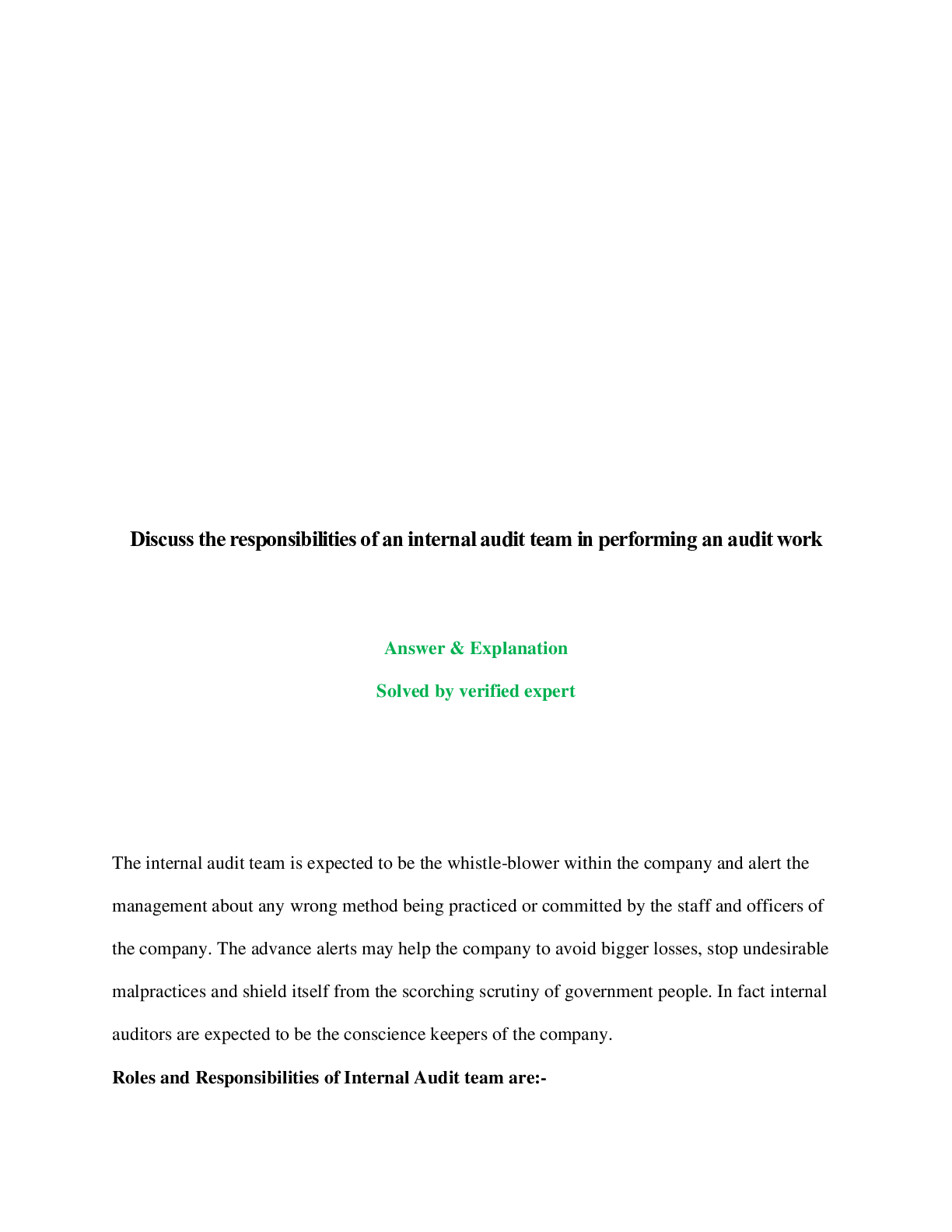
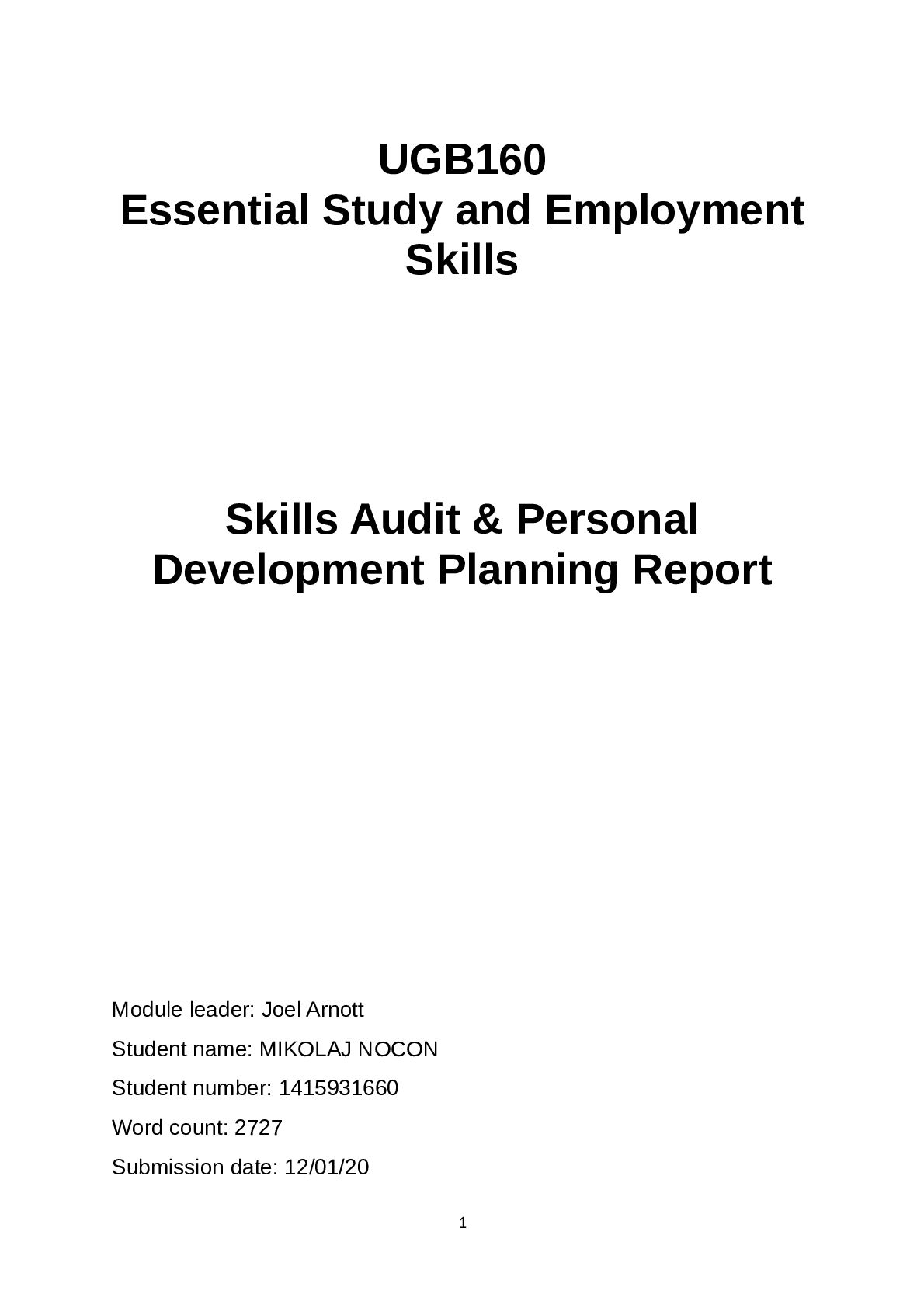


dfdfefe.png)

